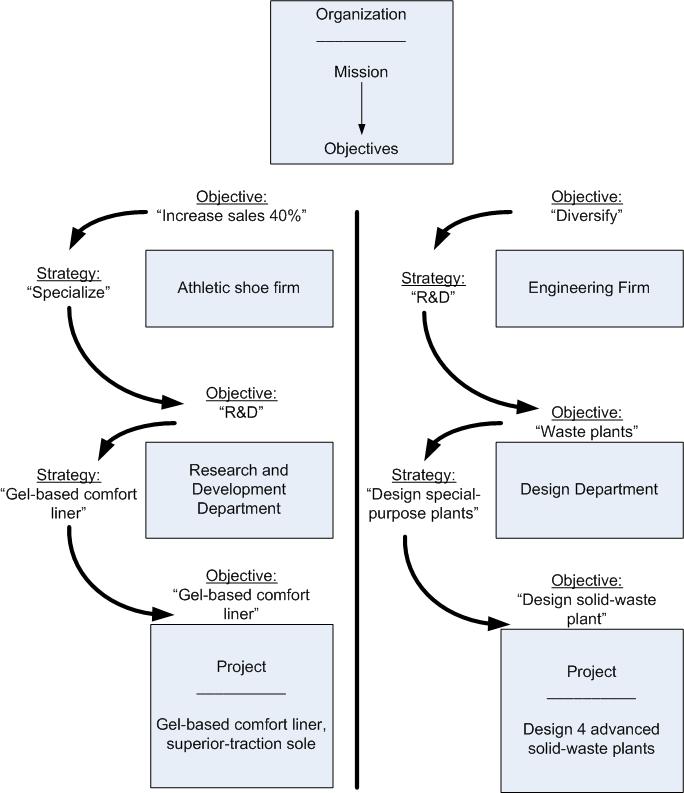Objectives translate the organization mission into specific, concrete, measurable terms. Organizational objectives set targets for all levels of the organization. Objectives pinpoint the direction managers believe the organization should move toward. Objectives answer in detail where a firm is headed and when it is going to get there. Typically, objectives for the organization cover markets, products, innovation, productivity, quality, finance, profitability, and people. In every case, objectives should be as operational as possible. That is, objectives should include a time frame, be measurable, be an identifiable state, and be realistic. George Doran (1981) created a characteristics-of-objectives memory device known as SMART:
S -- Specific: Be specific in targeting an objective
M -- Measurable: Establish a measurable indicator(s) of progress
A -- Assignable: Make the objective assignable to one person for completion
R -- Realistic: State what can realistically be done with available resources
T -- Time related: State when the objective can be achieved, that is,
duration
SMART is useful when writing objectives:
Each level below the organizational objectives should support the higher-level objectives in more detail. For example, if a firm making athletic shoes has an objective of achieving a 40 percent increase in sales through a research-and-development strategy, this charge is passed to the marketing, production, and R&D departments. The R&D department accepts the firm's strategy as their objective, and their strategy becomes the design and development of a new "gel-based comfort liner." At this point the objective becomes a project to be implemented to develop the retractable wheel luggage for market within six months within a budget of $300,000. See diagram below for a schematic of the linkages. A similar schematic is also shown for an engineering firm, which sets an objective to diversify by entering the waste-treatment-plant market. This objective becomes the strategy for their design department. In turn, this strategy becomes an objective for the engineering department, which decides on a strategy of specializing in the design and construction management of solid-waste plants. Implementation becomes a project of designing three technologically advanced solid-waste plants to meet the needs of local governmental groups, within eight months at a budget of $600,000.
PREVIOUS: The Strategic Management Process: An OverviewNEXT: Analyze and Formulate Strategies to Reach Objectives

